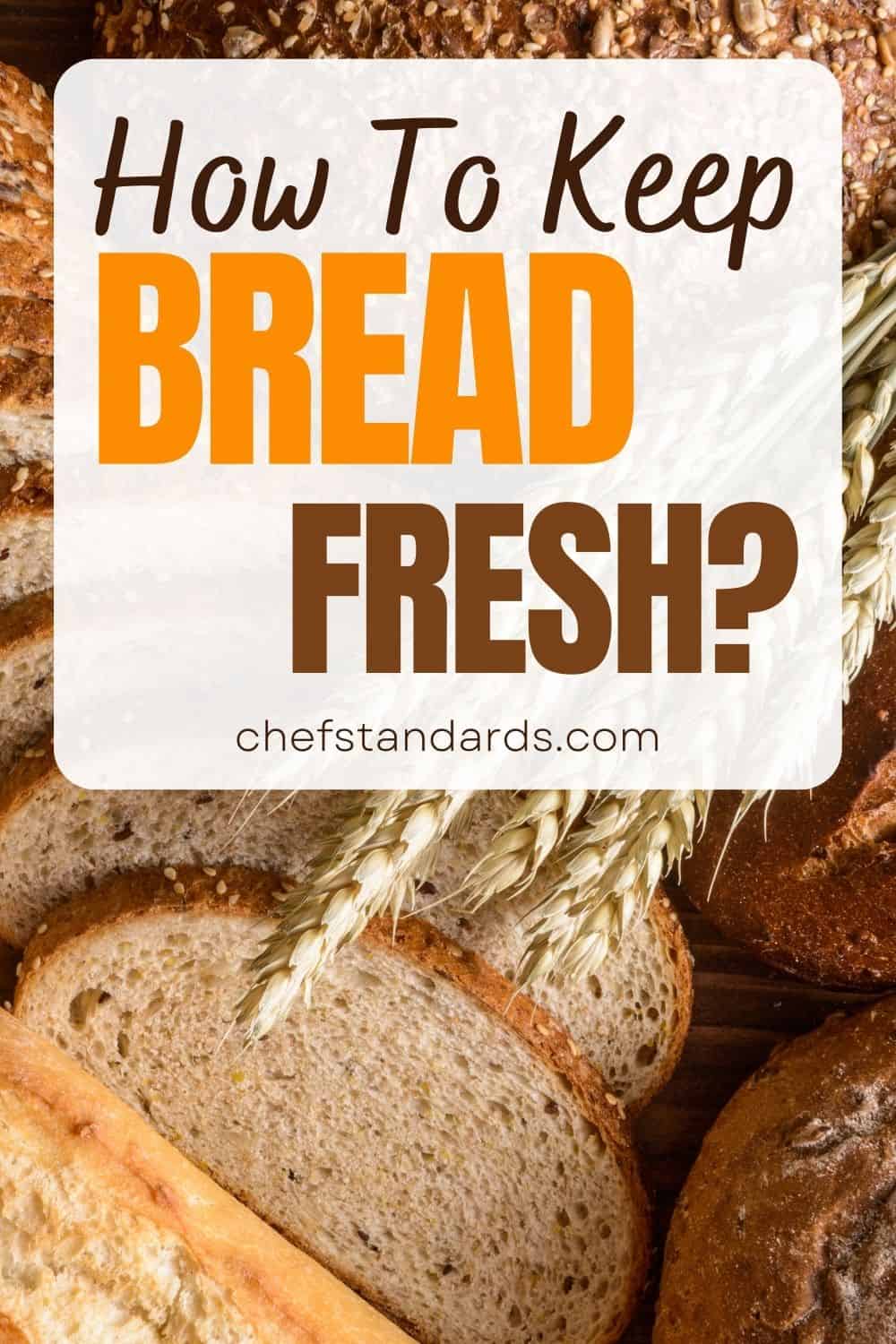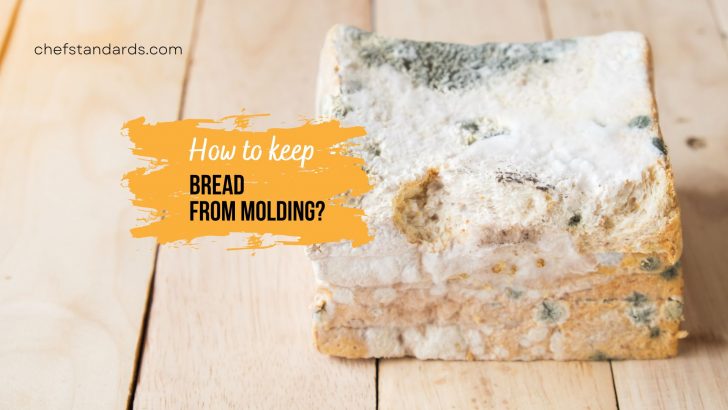Bread is one product that has been well-known for many centuries and it even plays an important role in the Bible.
To these days, it remains a kitchen staple in many cuisines around the world and it is one of the most eaten foods in the world. This is really no surprise since, besides traditional white bread, there are so many types that can be paired well with various delicious dishes.
Unfortunately, not everything is ideal when it comes to bread. It has one major disadvantage, and that is its short shelf life. It won’t take much until you see stale bread on your kitchen counter. But what’s even worse, is moldy bread.
So how to keep bread from molding? Fortunately, there are many effective tips and tricks, but 3 essential methods are covered in today’s article.
So, sit, read, and save that delicious bread from tragedy.
Factors That Influence Mold Growth
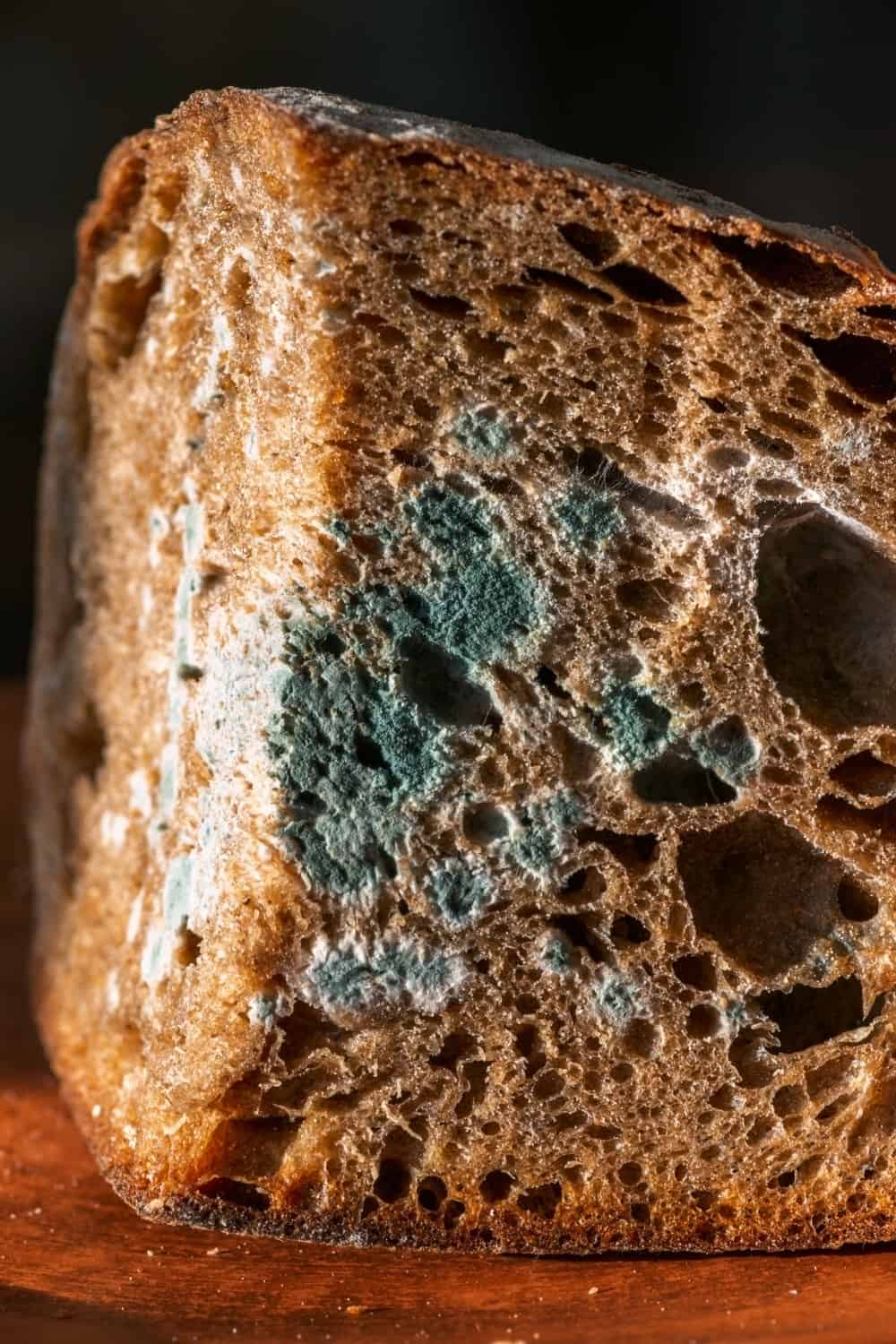
Mold is created by a type of fungus called filamentous fungi. These fungi produce microscopic spores that are present in the air and can land on various surfaces, including food items like bread, leading to visible mold growth.
However, just like with everything in this environment, there are factors that influence mold growing on food. So it is really worth knowing them in order to take reasonable actions to prevent it.
5 Key Factors to Consider
• Moisture: Moisture is everything when it comes to mold growth and other signs of food spoilage. Where there is moisture, there is potential mold as well. Since bread contains a certain amount of moisture, it is always susceptible to mold growth.
It is important to understand that moisture in bread alone probably won’t accelerate mold growth, but improper storage (high humidity in the air, condensation, etc.) certainly will, so it is important to avoid it.
• Temperature: Temperature is also essential for those unwanted invaders to thrive. Although they react a bit differently, both mold and bacteria prefer room temperature (68-72°F).
However, all temperatures that fall in the category of temperature danger zone (40-140°F) represent higher risk for mold growth. Fortunately, mold is not a fan of low temperatures.
Based on this, it is not hard to conclude what to do and what to avoid when storing your bread.
• Oxygen: Spores of mold are living creatures, and just like any living creature on this planet, including us, they need oxygen to stay alive and continue multiplying.
With this, I don’t mean that you need to close all holes for air, but reducing air flow a little bit is a must when it comes to storing bread.
• Nutrients: Again, just like any other living organism, mold needs organic matter to feed on. Now, there is no definite solution to this problem because bread itself is a food, but some ingredients can be reduced to slow down the growth of mold.
For example, spores really like fat and sugar, so reducing these ingredients can be crucial in reducing the risk of mold growth.
• Time: And of course, time is a factor that influences everything. No matter how much you reduce moisture, sugar, and oxygen, or lower temperature, if you let your bread stay for too long, it won’t end up well.
How To Keep Bread From Molding: 3 Best Methods
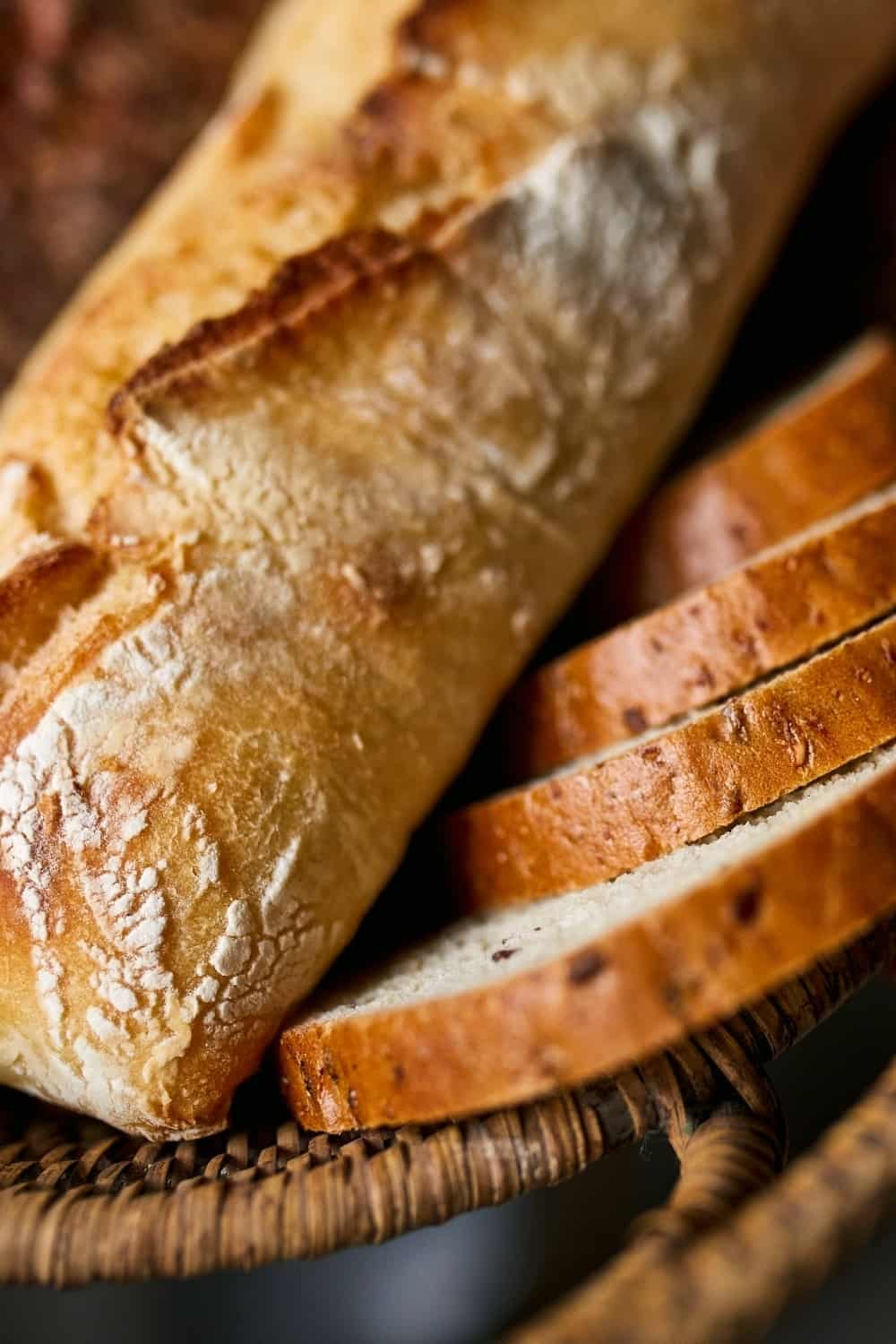
Now that we know what the most important factors are when it comes to mold growth, 3 exceptional methods are created based on those. And these methods certainly won’t disappoint.
1. Use Bread Box: By Far, The Best Method
Bread box is a gift from heaven and it is no coincidence that it is named as it is.
Experts created it exactly based on knowledge of these previously stated factors, i.e. to eliminate as much of them as possible.
First, they regulate the temperature by creating a barrier between the bread and outside light, as too much light can create a higher temperature inside the box.
Also, they made it so that it doesn’t let too much oxygen inside.
Actually, there is just the right amount of air circulation to prevent mold growth, as well as enough humidity to keep bread from drying out.
I also have to emphasize that these boxes come in different sizes. Bigger boxes are always better, as they allow more air flow. Also, no matter how big it is, you should therefore always avoid overfilling it with bread.
Finally, there are also different materials used for making bread boxes. Enamel and ceramic are the best ones. I would suggest you avoid using wooden boxes, as they can trap the mold between their grains.
2. Bread Bags As A Great Alternative
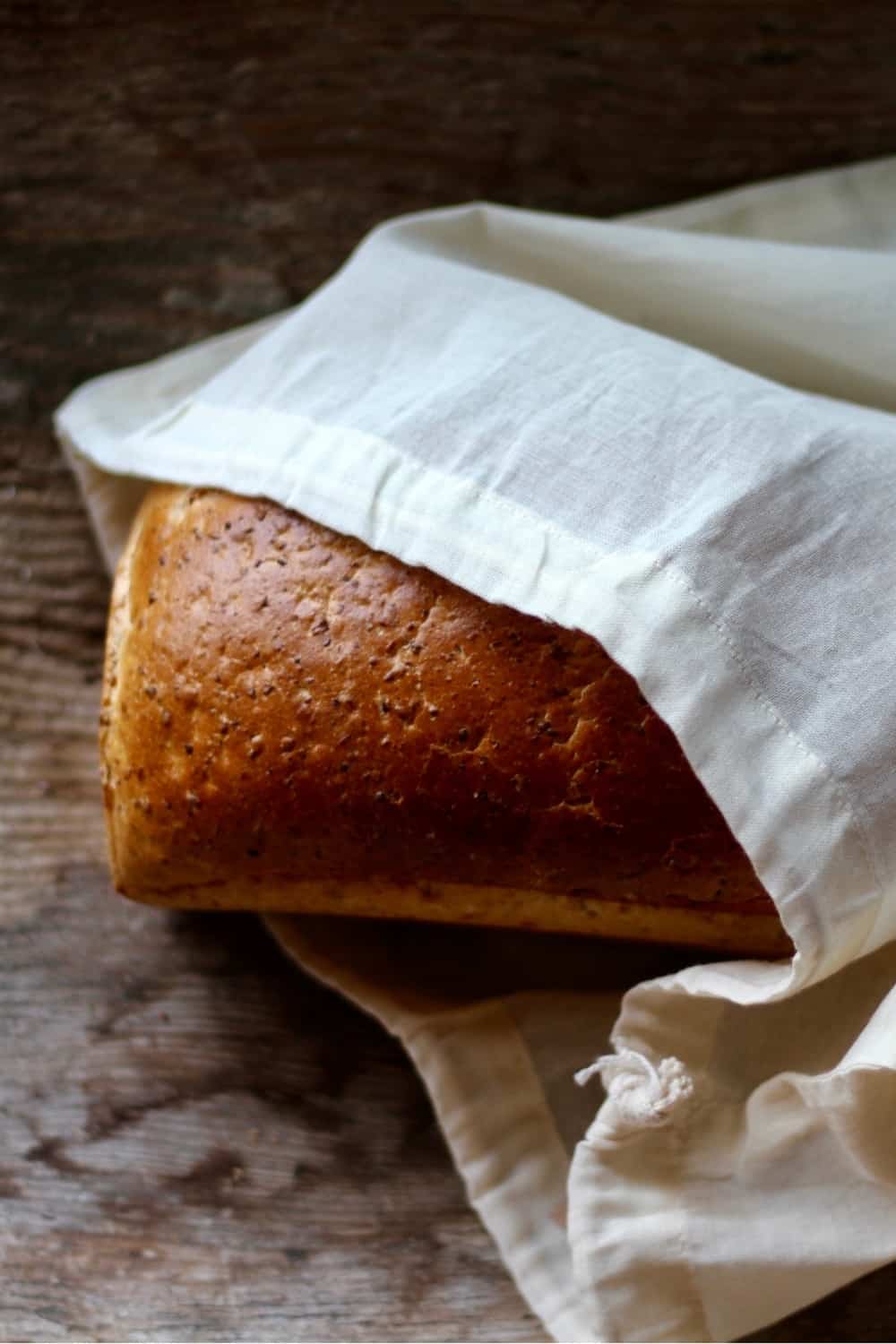
These bags also bear the the term “bread” in their name, so you can assume that they are good. Not as good as bread boxes, but they are certainly the best alternative.
I am saying this because they also achieve a good ventilation that prevents mold from growing while also preventing the bread from drying out.
There are two main types of bags created to protect your bread: cloth bread bags and brown paper bags.
Cloth bread bag works especially well for white French bread, as they can keep it fresh for up to 2 days.
Brown paper bags, on the other hand, are more suitable for hard-crusted rustic breads and will also keep them fresh for up to 2 days.
If you don’t have one of these, parchment wrapping paper will also do the trick. Another good alternative for a cloth bread bag is a large clean tea towel. As you can see, you have plenty of options.
3. Freeze For Long-Term Storage
Alongside using bread boxes, freezing is definitely the best storage option if you want to protect your bread from molding.
Think about it. There is virtually no light, temperatures are extremely low for mold spores, moisture has become ice crystals, and you can also cut out oxygen if you store it properly.
Aside from that, you can leave your bread in the freezer for up to 2-3 months. According to the USDA, you can keep leftovers frozen for 3 to 4 months not for safety but for quality because frozen leftovers can lose flavor when stored for longer times in the freezer.
Now, of course, you need to go through the process correctly. First, it is best to avoid freezing the whole loaf, but rather portion it into individual slices. How thick those slices will be is up to you to decide.
Tightly wrap those slices in either aluminum foil or plastic wrap and place them into a freezer-safe plastic bag. Seal the bag tightly, label it with the exact date of storage, and put it in the freezer.
Once you decide to use the bread, all you have to do is to take out as many slices as you want, thaw them on the countertop and enjoy.
You can also freeze banana bread, as well as English muffins.
Is Refrigeration a Good Option To Prevent Mold Growth?
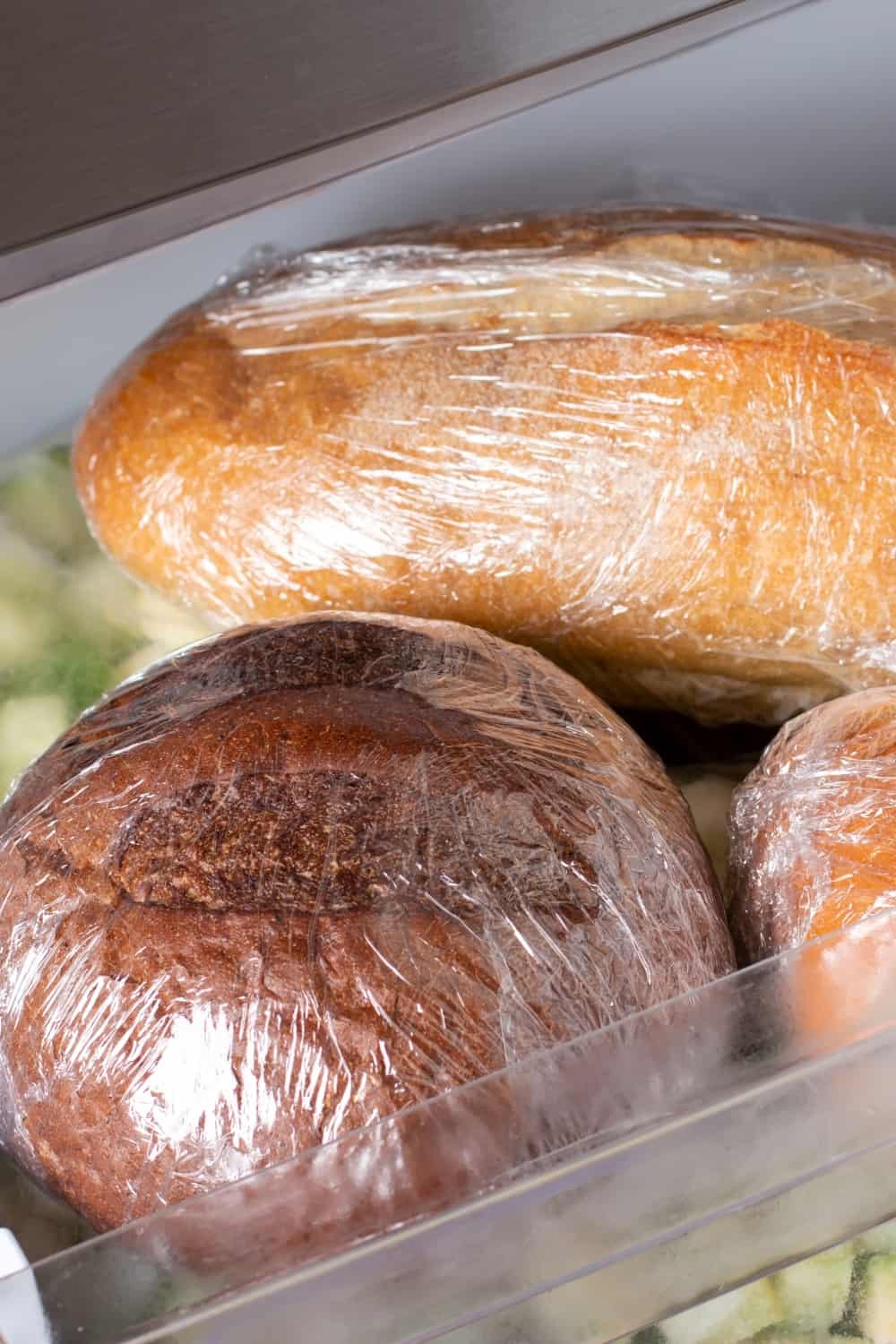
Refrigeration is, indeed, a great option for this purpose. The temperature is just about perfect to prevent mold from growing, and the oxygen and light are also reduced. According to the USDA, bread or any other leftovers can be kept in the refrigerator for 3 to 4 days.
The problem with refrigeration is the fact that there is another danger. Conditions in the fridge are also ideal for making your bread dry out, causing it to go stale.
Namely, the temperature of the refrigerator causes the starches in the bread to deteriorate, meaning they crystallize and become firm. This leads to a dry and unpalatable texture, making the bread lose its freshness.
If you really want to refrigerate your bread, you can store it in a bag, but you can store it for just one day. If you are looking for long-term storage, a freezer is a much better option.
Fortunately, people can be very creative and innovative, and these guys in the video below proved it. They found the hack to prevent the bread from drying out, as well as from mold growth for, believe it or not, for 9 days. So, you should definitely check it out.
The Type Of Bread Also Plays An Important Role
Some types of bread contain certain ingredients that are more suitable for mold. Aside from that, some of them have a higher moisture content, which is ideal for mold to grow.
In general, whole grain breads, which contain the entire kernel, are more prone to mold growth. This is because they tend to have higher amounts of oil.
Besides these, every type of bread that is high in sweeteners, such as honey, molasses, or sugar, falls in this category. The presence of sugar or similar ingredients can provide an additional food source for mold, encouraging its growth.
Every type of bread that contains fruits (banana bread) or dried fruits, as well as seeds and nuts, may be more susceptible to mold growth.
On the other hand, some types of bread are more resistant to mold. Rye bread is one of those. It is made from rye flour which naturally contains less moisture than wheat flour.
There are also crusty breads, such as baguettes or sourdough boules. The drier crust helps to create an inhospitable environment for mold to thrive.
Finally, certain gluten-free breads, like those that are made with alternative flours like rice, almond, tapioca flour, may be more resistant to mold growth. These flours generally have a lower moisture content, reducing the favorable conditions for mold.
Additional Tips And Tricks
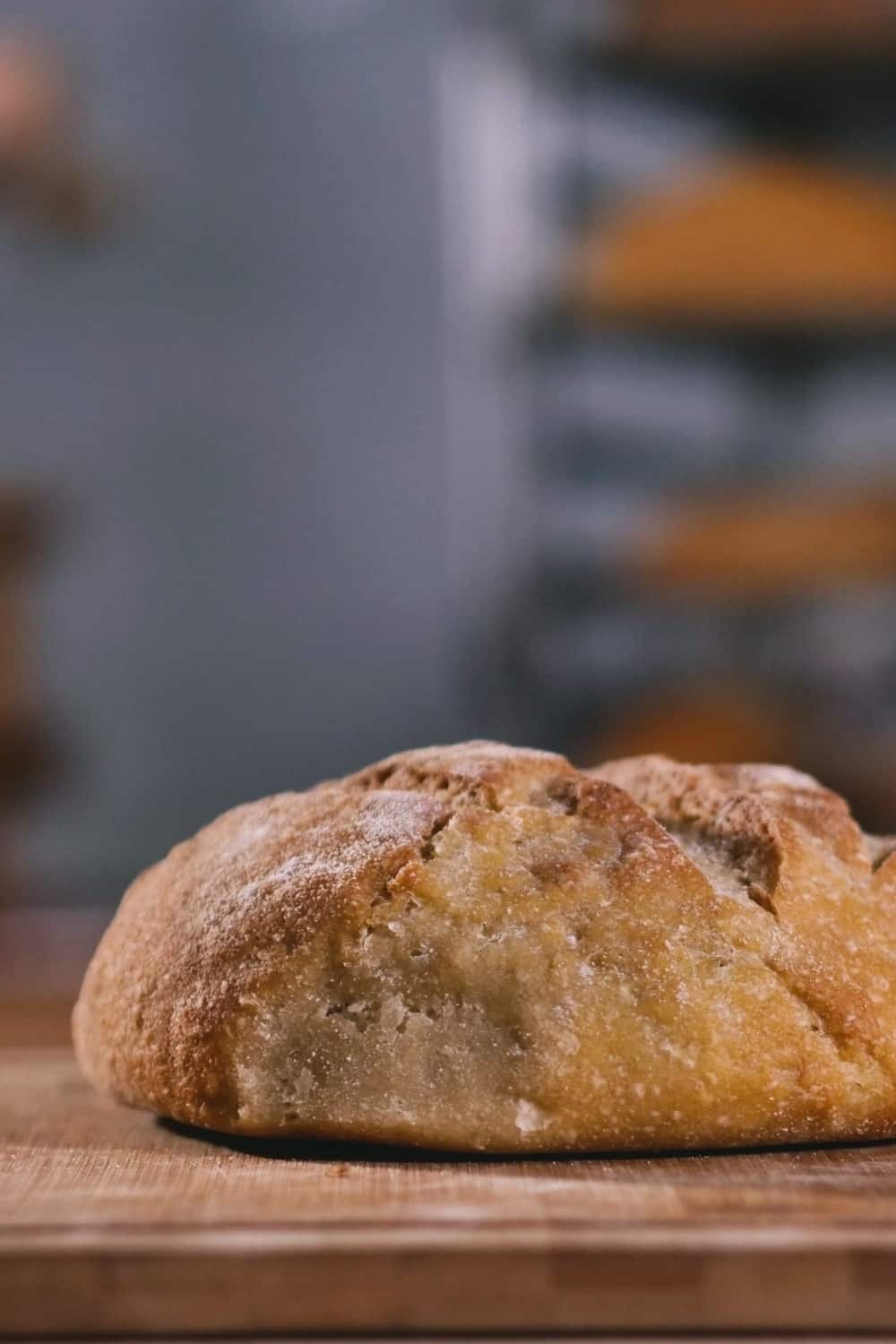
You now know what the best practices are when it comes to storing bread. However, there are always some additional tips and tricks worth knowing in order to handle your bread in the best possible way.
• Always choose fresh bread, as freshly baked bread has a lower chance of already harboring mold spores.
• Although some sources recommend it, my advice is to avoid airtight containers, as they tend to hold moisture and potentially speed up the rate at which your bread develops mold.
• Don’t let your bread stay on the countertop, as it can become stale very quickly due to the low exposure to raw air, and ants can reach it very easily as well.
• Remove it from places where the sources of high heat are near (oven, AC, radiator, etc.), as well as in places where the temperature is not stable, i.e. where there can be a lot of evaporation and condensation.
• Avoid storing your bread in plastic bags, as they can provide ideal conditions for mold growth, i.e. moisture and warmth.
• When buying bread, you should always avoid pre-sliced bread. It is more exposed to air and can get moldy much quicker than a whole bread.
• Before you store bread, it is better to slice it from the middle because end crusts can keep the loaf fresh with just enough moisture to keep it fresh without inviting mold.
• If your bread doesn’t get moldy, but it gets stale, there is a way of reviving it. Just put it onto a cookie sheet covered in parchment paper and put it in the oven for 3-5 minutes, and it will be perfect for enjoying.
• When making homemade bread, use natural preservatives, such as cinnamon, ginger, or garlic, in order to keep your bread fresh for longer.
• Once you decide to toss it in the trash, rethink about toasting it so it doesn’t go to waste. You can do so many things with that toast, from enjoying morning Spuntini if you are in Italy to making it sweet with some delicious cookie butter.
